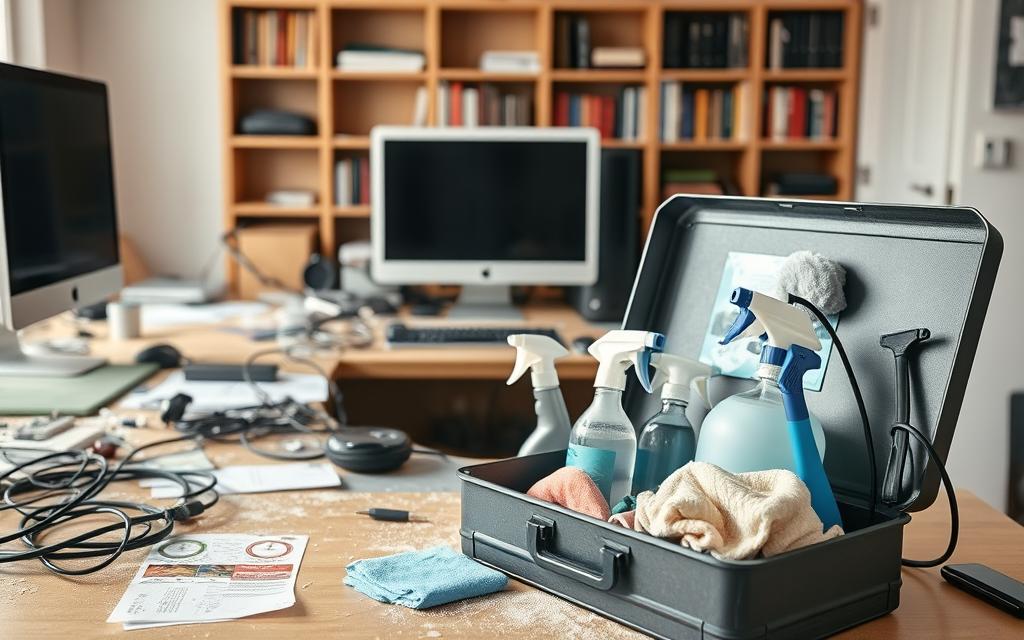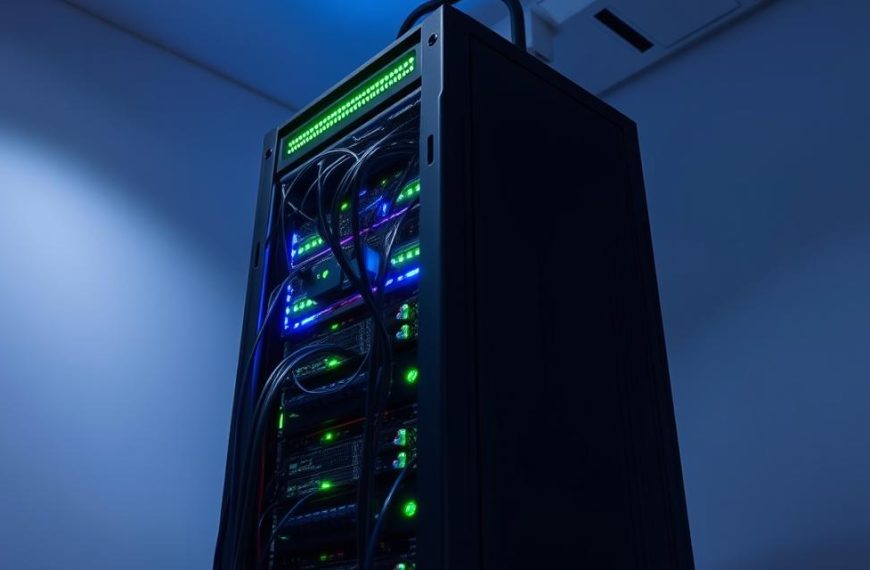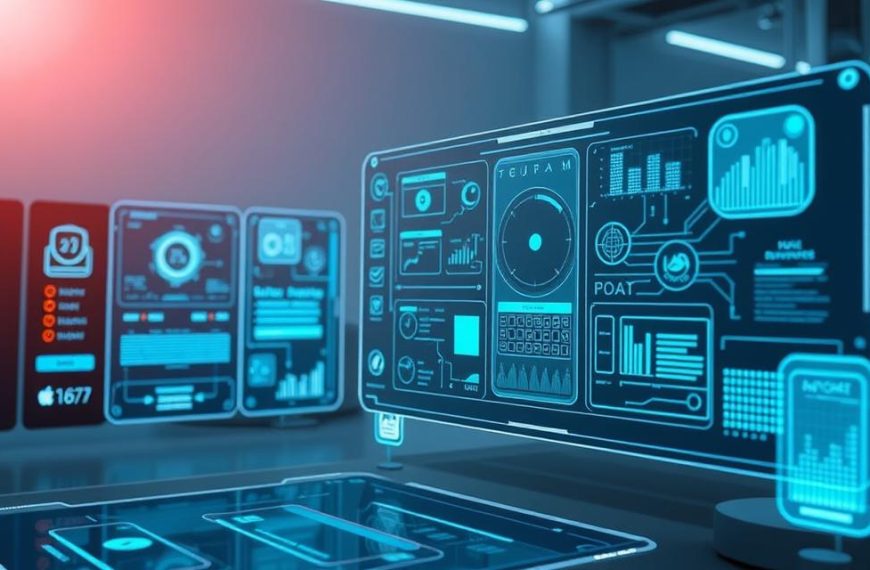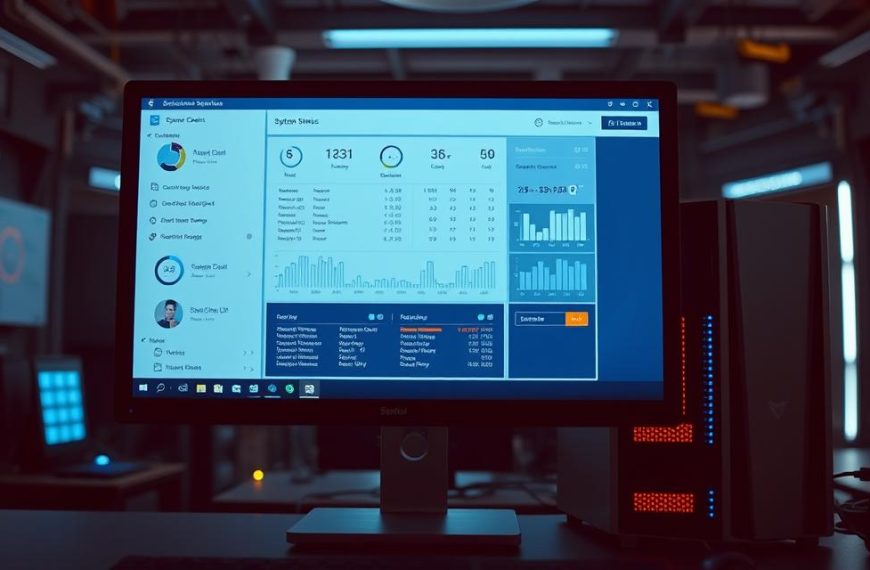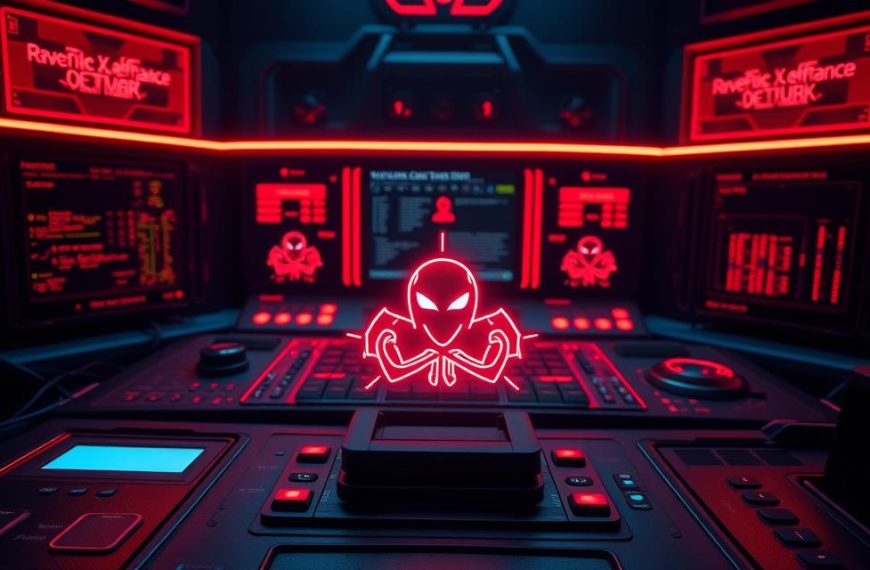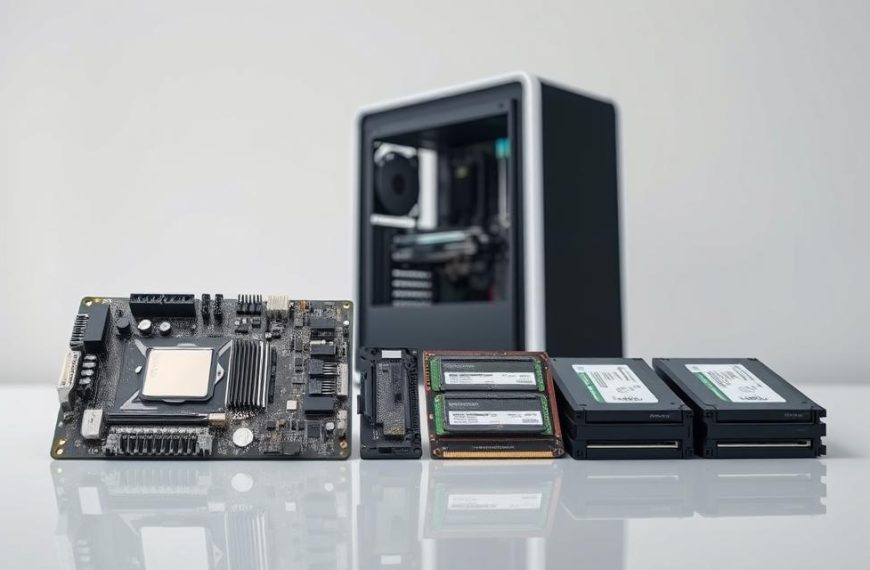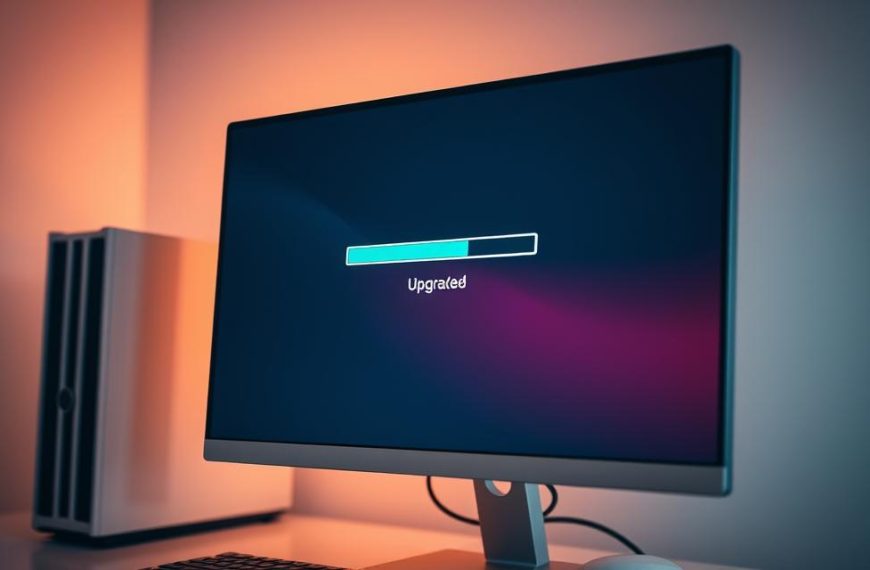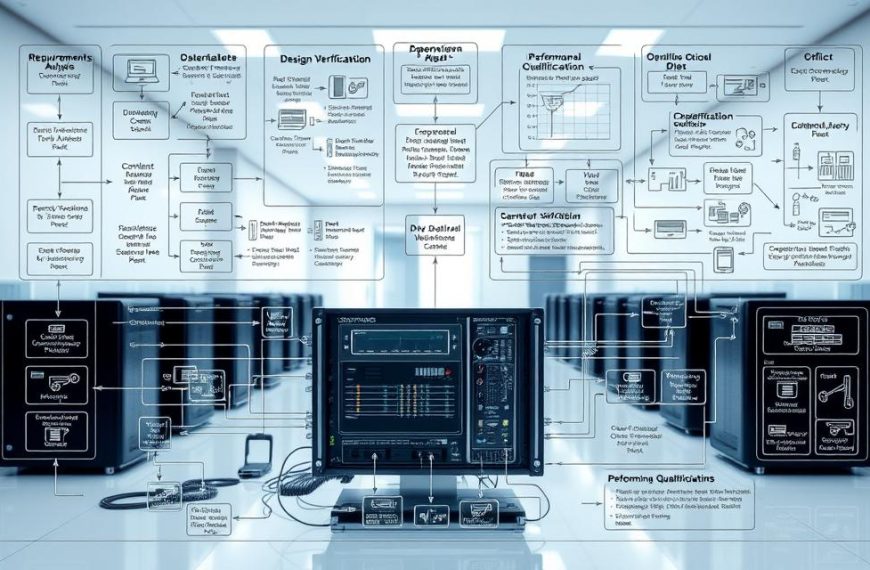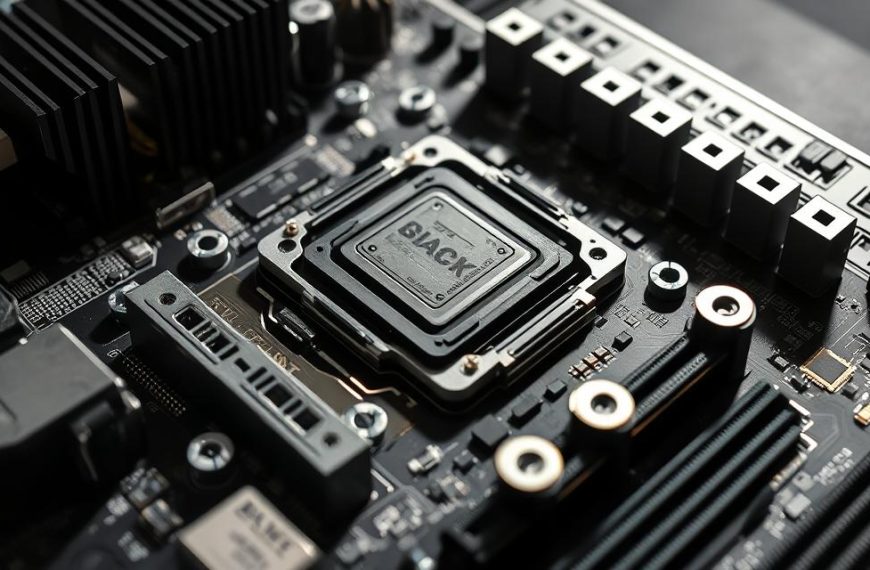Keeping your device in top shape needs regular care for both its parts and software. Proper computer system cleaning stops it from slowing down and keeps your data safe from harm.
Experts like Norton and McAfee warn about dust and digital mess. These can cause overheating, crashes, and security issues if not dealt with.
A detailed PC maintenance guide can save you from expensive fixes and make your device last longer. It keeps your work smooth and boosts your productivity.
This guide shows you how to optimise computer performance with cleaning tips. You’ll discover ways to keep your system running well and protect your digital world.
Essential Preparations Before Computer Cleaning
Getting ready for computer cleaning is key to a smooth and safe process. Organising your steps helps avoid damage and keeps your data safe. These steps are the foundation for good maintenance.
Gathering the Right Tools and Materials
Having the right PC cleaning tools makes cleaning easier and more effective. You’ll need compressed air for dust, microfiber cloths for surfaces, and cotton buds for small areas. These tools help you clean without harming your computer’s parts.
Think about your computer’s type when picking materials. Desktops might need more air for inside cleaning, while laptops are better with gentle solutions. Always use anti-static tools near internal parts to avoid electrical damage.
Creating Backups and Safety Precautions
Good safety precautions protect you and your computer. Always turn off and unplug before cleaning. Clean in a well-ventilated area to avoid dust inhalation.
It’s vital to do a full data backup before cleaning. Use external hard drives or cloud storage to keep your files safe. This step prevents losing data during cleaning.
Follow these key safety steps:
- Disconnect all power sources completely
- Remove batteries from laptops before cleaning
- Use anti-static wrist straps when handling internal components
- Keep liquids away from electronic equipment
Understanding Your Computer’s Specific Requirements
Different computers need different cleaning approaches. Desktops often get more dust inside and need detailed cleaning. Laptops focus on keyboards and vents.
Think about your environment when deciding how often to clean. Computers in dusty places or with pets need more cleaning. Gaming systems with fast cooling need extra fan and heat sink care.
| Computer Type | Primary Cleaning Focus | Recommended Frequency | Special Considerations |
|---|---|---|---|
| Desktop PC | Internal components and case | Every 3-6 months | More space for thorough cleaning |
| Laptop | Keyboard and ventilation | Every 2-3 months | Gentle cleaning required |
| Gaming Rig | Cooling systems and fans | Monthly | High dust accumulation |
| Office Computer | External surfaces and ports | Quarterly | Shared use considerations |
Always check your computer’s manual for cleaning tips. Manufacturers often give advice on cleaning their models. This keeps your warranty valid and your system running well.
How to Clean Out Your Computer System Software
Keeping your computer’s software in order is as important as cleaning its hardware. A tidy digital space boosts performance and makes your system last longer. Here, we’ll look at key steps to keep your software in top shape.
Removing Unnecessary Programs and Applications
Computers collect unused programs over time. These take up space and slow things down. Check your installed programs regularly through the Control Panel or Settings menu.
Find apps you haven’t used in months and think about deleting them. By deleting unused apps, you save space and speed up your system. Tools like Norton Utilities Ultimate can help keep your system tidy.
Cleaning Temporary Files and System Junk
Computers make lots of temporary files while running. These include browser cache, logs, and update leftovers. Windows has tools like Disk Cleanup to clear out this junk.
For deeper cleaning, use special tools to get rid of system junk. Removing these files frees up space and makes your system faster. Some people use command prompt methods for detailed cleaning.
Optimising Startup Programs and Services
Many programs start automatically when you turn on your computer. Too many can slow down your start-up and use up memory. Use Task Manager (Ctrl+Shift+Esc) to manage these programs.
Turn off apps that don’t need to start right away. Keep only the most important programs and security software in your start-up list. This makes your computer start faster and work better.
Updating Drivers and Operating System
It’s key to keep your operating system and drivers up to date. Updates fix bugs, improve security, and make things work better. Turn on automatic updates to get updates quickly.
For drivers, check your manufacturer’s site or use device manager to update. New drivers fix hardware problems and make your system more stable. This step finishes off your software cleanup routine.
Comprehensive Hardware Cleaning Procedures
Software optimisation keeps your system running well. But, cleaning the physical parts is key to removing dust and debris. This not only keeps your computer looking good but also stops it from overheating and makes parts last longer.
External Cleaning: Case, Keyboard and Mouse
Start by cleaning the parts that get dirty every day. Make sure devices are turned off and unplugged before you clean them.
Cleaning Techniques for Different Surface Materials
Computer cases are made of different materials that need different cleaning methods. Plastic cases can be cleaned with a damp microfiber cloth and isopropyl alcohol. Metal cases can handle stronger cleaners but avoid harsh products that might scratch.
Glass parts need special cleaners without ammonia. Use soft-bristled brushes on textured surfaces to remove dust without scratching. Always test cleaners on hidden spots first.
Proper Keyboard and Mouse Maintenance
To clean a keyboard, turn it upside down and shake it gently to get rid of loose dirt. Compressed air is great for blowing out dust between keys. For tough dirt, you can remove keycaps to clean underneath.
Mice need careful cleaning too. Use cotton swabs with isopropyl alcohol on optical sensors. For mechanical mice, take out the tracking ball and clean the rollers with compressed air.
Internal Component Cleaning and Maintenance
Cleaning inside your computer needs care and preparation. Work in a place without static and consider wearing an anti-static wrist strap. Make sure your computer is off and unplugged before you open it.
Safe Dust Removal from Motherboard and Components
Removing dust from inside needs a careful plan. Use compressed air in short bursts, keeping it a few inches away from parts. Start with the power supply vents, then move to expansion cards and RAM.
Be careful around capacitor clusters and connection ports where dust builds up. Don’t use vacuum cleaners as they can create static. For hard-to-reach dust, soft anti-static brushes are helpful without damaging parts.
Cleaning Fans and Heat Sinks Properly
Fans need special care when cleaning. Hold the fan blades steady while using compressed air to avoid damaging the bearings. Use air bursts on heat sink fins and then brush them gently.
If fans are very dirty, consider removing them for a deep clean. Remember where screws and cables go before taking things apart. After cleaning, put everything back in the right place and turn on your system.
Monitor and Screen Cleaning Best Practices
Cleaning monitors needs special care to avoid damaging the screen. Use screen cleaners or distilled water with microfiber cloths. Spray the cleaner on the cloth, not directly on the screen.
Wipe screens in circular motions without too much pressure. For touchscreens, use cleaners made for them. Let screens dry completely before turning on the display.
| Cleaning Area | Recommended Tools | Safety Precautions | Frequency |
|---|---|---|---|
| Computer Case | Microfiber cloth, isopropyl alcohol | Power off completely | Monthly |
| Keyboard | Compressed air, keycap puller | Disconnect from computer | Bi-monthly |
| Internal Components | Compressed air, anti-static brush | Use anti-static wrist strap | Quarterly |
| Monitor Screen | Microfiber cloth, screen cleaner | Spray cleaner on cloth only | As needed |
By following these detailed cleaning steps, you can keep your computer running well and looking great. This prevents damage from dust and debris.
Advanced System Maintenance Techniques
There’s more to keeping your computer running smoothly than just cleaning. Advanced techniques tackle deeper issues that build up over time. They boost your computer’s performance and security.
Disk Defragmentation and Optimisation
Disk defragmentation is key for traditional hard disk drives. It reorganises data, making your drive work better.
Windows has a tool called “Optimise Drives” for this. Use it once a month for the best results. But, solid-state drives (SSDs) need the TRIM command, not defragmentation.
Registry Cleaning and System Tweaks
Registry clean operations need care. Registry cleaners can improve performance but might destabilise your system if not used right.
Stick to trusted registry cleaners. Always make a system restore point before making changes. Manual editing is risky unless you’re very tech-savvy.
Malware and Virus Removal Strategies
Good malware removal starts with solid security software. Norton AntiVirus Plus or McAfee offer top-notch protection.
Regular scans are essential for catching and removing malware. Use antivirus and anti-malware together for full protection. For tough cases, try boot-time or offline scans.
These advanced methods add to your regular cleaning routine. They keep your system healthy and secure for the long term. For more tips, check out our comprehensive computer maintenance guide.
Essential Cleaning Tools and Products
Using the right cleaning tools is key for keeping computers in top shape. The right gear stops damage and makes sure everything is clean.
Recommended Software Cleaning Tools
Digital cleaning tools boost your computer’s speed and safety. They get rid of unwanted files and guard against viruses.
CCleaner for System Optimisation
CCleaner is a top pick for making your system run better. It clears out temporary files, browser history, and more.
It comes in free and paid versions. People like its easy-to-use design and deep cleaning power.
Malwarebytes for Security Cleaning
Malwarebytes is great for fighting off security threats. It finds and removes malware that other antivirus software might miss.
Running regular scans with this tool keeps your system safe. It updates often to tackle new dangers.
Physical Cleaning Tools and Solutions
For physical cleaning, you need the right tools to avoid harming your computer. The right tools ensure safe and effective cleaning.
Compressed Air Brands and Proper Usage
Compressed air is good for getting rid of dust from inside your computer. Brands like Dust-Off and Falcon Safety Products are popular.
Always hold the can upright to avoid moisture. Short bursts are better than spraying continuously for dust removal.
Anti-static Wipes and Cleaning Solutions
Anti-static wipes stop static damage when cleaning. They safely wipe away fingerprints and smudges from screens and surfaces.
Isopropyl alcohol solutions paired with microfiber cloths are great for deep cleaning. Stay away from household cleaners that can harm your computer’s parts.
Conclusion
Regular computer system maintenance is key for both hardware and software. It keeps your system running smoothly and safely. This summary shows how cleaning stops performance drops and security risks.
Regular cleaning boosts your system’s speed and protects your data. It also makes your devices last longer. These steps lead to a faster, more reliable computing experience.
Tools like Norton Utilities help with maintenance. They make it easier to keep your system in top shape. A regular maintenance schedule is essential for optimal performance.
By following these cleaning strategies, your computer will work better. Your efforts pay off with reliable performance and value from your technology.

